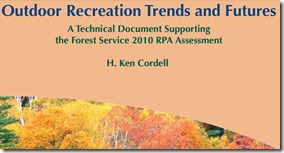In the early spring of 1964 I had a lot to celebrate. I earned Eagle Scout, got my learner’s permit to drive and inherited an old beloved 1952 hand-me-down Jeep from my grandparents. Life was good.
So a group of us planned a week-long fly-fishing trip for that summer going up through the Bob Marshall Wilderness using pack horses. “The Bob,” as it is known, includes a million acres along the Continental Divide just south of Glacier National Park in a part of western Montana originally intended to be part of Idaho, my native state.
I didn’t realize until recently that in addition to signing my Eagle certificate in early March of that year, President Lyndon B. Johnson would be signing the Civil Rights Act the same week we headed up into “The Bob.”
A few months later the President would also sign the Wilderness Act that would create a system of places like “The Bob” after that legislation had been floor-sponsored by Senator Frank Church of Idaho.
Recreation was not the original purpose of national forests when they were first created in 1891, but by 1916 it placed at or near the top of the list for forest value in many sections according to an excellent new book entitled American Canopy: Trees, Forests, and the Making of a Nation.
From 1945, three years before I was born, through 1960 recreation visitors seeking out national forests for recreation grew by 900% to 92 million annually compared to a 35% growth in population during the same period.
A report (link takes a while to open) just published benchmarks that over the first decade of this century, annual participation in nature-based outdoor activities among Americans 16 years of age or older increased 7.1% to nearly 210 million.
Even more significant, though, is that the number of participant days in these 50 surveyed activities jumped 40% to 52 billion and the average per capita jumped 31%.
Topping the list was an 83.5% or 4.8 billion participant-day increase in viewing wildflowers/trees and a 62.6% or 4.5 billion participant-day increase in viewing natural scenery. Together they account for 88% of nature based participant days.
The rolling study conducted as part of the renewable resources assessment includes outdoor activities near home, along roadsides and in places such as parks and public forests. Various models show that the activity of viewing nature will grow anywhere from 42% to 76% by 2060.
The outdoors as recreation, including self-renewal and self-reflection, has roots in the 1830s and before, but it took off as a form of tourism in the 1920s when nearly 60% of the 10 million cars in existence were being used for autocamping.
I lived for a couple of years in the Marina District of San Francisco. It was at the 1915 World’s Fair held in that neighborhood and where a few of the fair’s buildings still exist that Thomas Edison famously sparked the interest of Henry Ford and Henry Firestone in the autocamping caravans they conducted for many years with their families.
No one may have been any more influential than Ford and Firestone in making this form of recreation accessible to individuals and families across the nation.
However, nature-based outdoor recreation has always been easily dismissed by some who are perhaps less introspective or self-reflective or possibly focused only on less strategic commercial development without regard to the far greater commercial significance of nature.
An obvious example that comes to mind are outdoor billboards and those who enable the companies that own them to clear-cut hundreds of thousands of acres of public roadside trees while desecrating views come to mind as an obvious example.
Roadside desecration stalked nature-based outdoor recreation almost immediately after it emerged and was hilariously depicted in 1920s editorial cartoons now archived for safekeeping in the New York Public Library.
That sparked the origin of wilderness recreation such as I enjoyed in “The Bob” during that week before I turned 16. Bob Marshall, for whom that particular wilderness area was named, was appalled by the roadside desecration of the 1920s as he frequented the Adirondacks each summer even promoting them while earning a forestry degree at Syracuse.
He worked for the National Forest Service and was stationed in Missoula south of where his namesake wilderness area is today. He also loved Alaska, naming the two peaks Gates of the Arctic which eventually came to be designated a national park and wilderness area too.
He died before he turned 40, after founding The Wilderness Society, and decades before his vision was signed into law which occurred a few months after my 1964 visit to “The Bob.”
Little did I know that that fly-fishing trip wouldn’t be the last time I would cross Marshall’s path, as I went on to live for many years in Alaska during the 1980s and am now involved with Scenic North Carolina in an effort to stem and then reverse visual pollution while promoting the scenic character of my adopted home.
More southerners participate in nature-based outdoor recreation than those of the Rocky Mountains and Pacific Coast combined, but we do far too little to protect it from roadside desecration such as huge, roadside billboards.
No comments:
Post a Comment